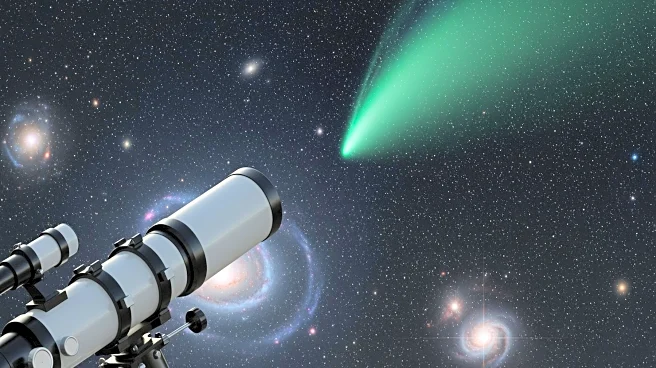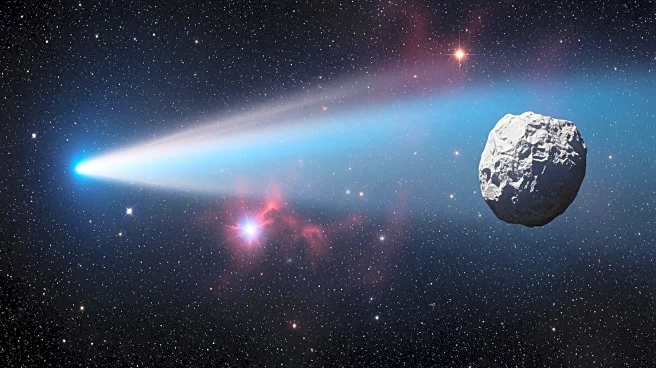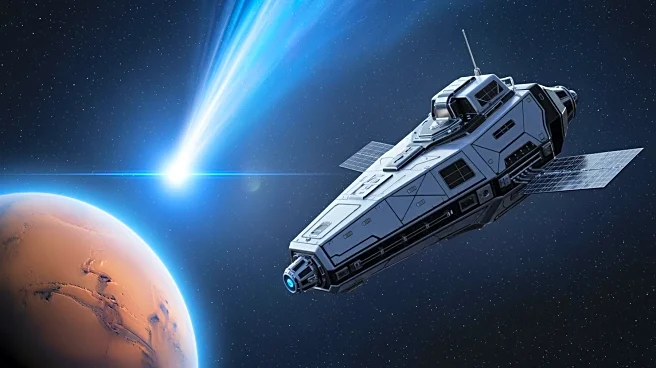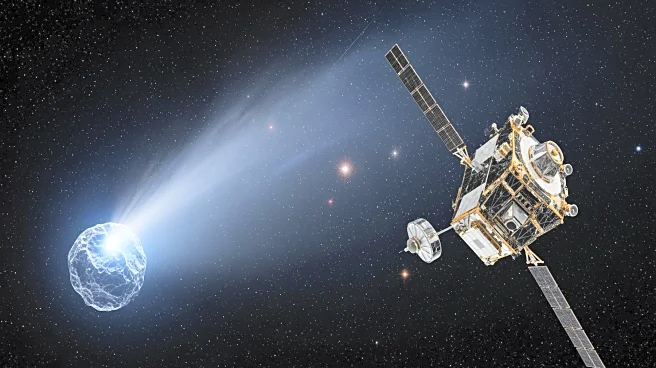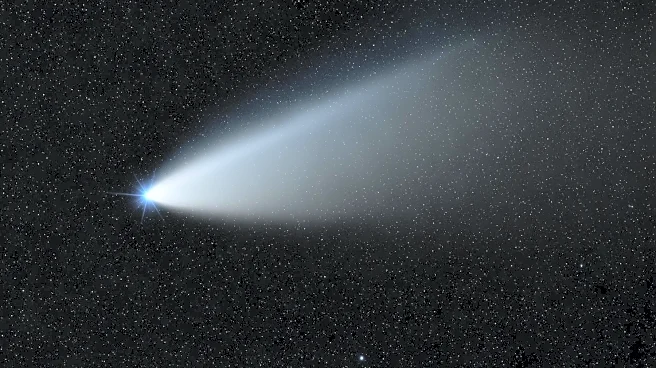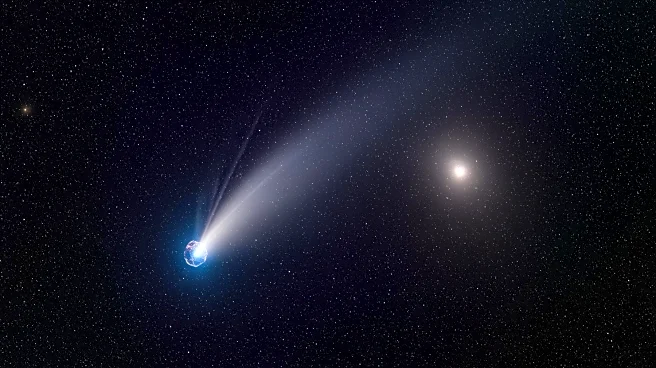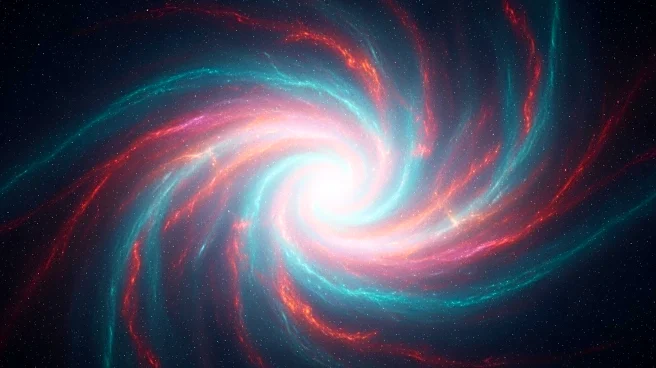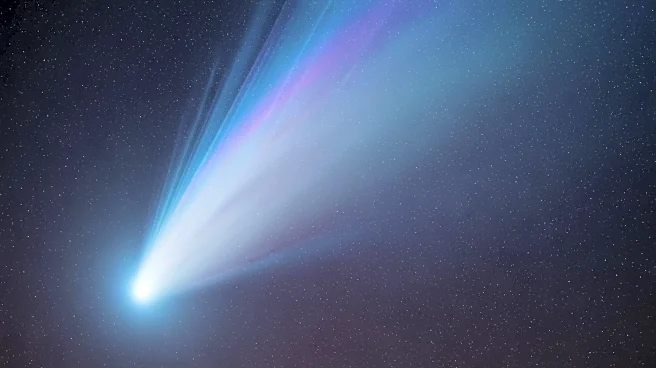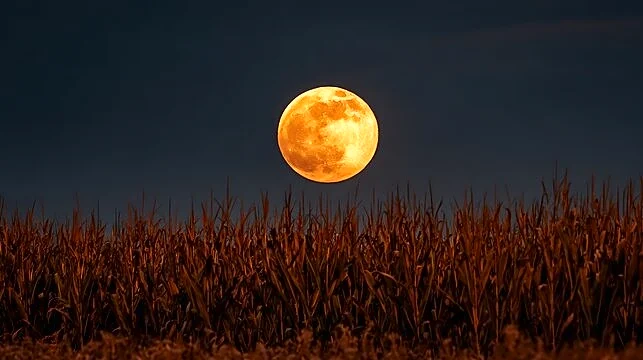What's Happening?
Qicheng Zhang, a researcher at the Lowell Observatory in Arizona, has captured new images of comet 3I/ATLAS, revealing its green glow and hidden tail. Using the observatory's Discovery Telescope, Zhang observed
the comet as it moved away from the sun, noting the presence of diatomic carbon particles that emit a green hue. The comet's atmosphere, or coma, becomes visible as it approaches the sun, with gases sublimating from its surface. Despite the comet's tail appearing absent in the images, Zhang explained that it is visible when viewed head-on, curving slightly to the left. Comet 3I/ATLAS, discovered in July, is notable for being one of the few interstellar visitors recorded, potentially older than the solar system itself.
Why It's Important?
The observations of comet 3I/ATLAS are significant for astronomers studying interstellar objects. As one of the few known interstellar comets, it provides a unique opportunity to understand the composition and behavior of such celestial bodies. The comet's green glow, caused by diatomic carbon, offers insights into the chemical processes occurring as it interacts with solar radiation. Understanding these processes can help scientists learn more about the origins and evolution of comets from other star systems. Additionally, the comet's visibility post-perihelion allows for further study of its gases and makeup, contributing to the broader field of astronomy and astrophysics.
What's Next?
As comet 3I/ATLAS continues its journey, astronomers are expected to conduct further observations to gather more data on its composition and behavior. The comet's post-perihelion phase is a critical period for studying its activity, and researchers will likely use various telescopes to capture additional images and data. These findings could lead to new insights into the nature of interstellar comets and their role in the cosmic environment. The ongoing study of 3I/ATLAS may also contribute to the development of new theories regarding the formation and evolution of celestial bodies in the universe.
